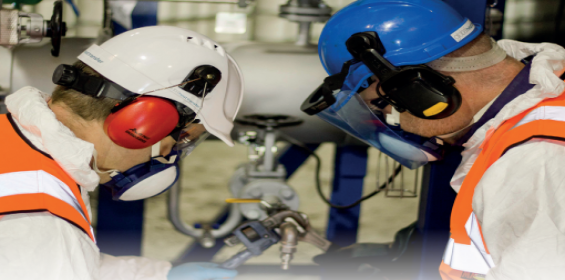According to research by Information Technology Intelligence Consulting (ITIC), 98% of organisations say a single hour of downtime costs around £75,000. While manufacturers understand that carrying out regular maintenance will reduce the risk of downtime, taking the time to properly design and install a system can increase equipment lifespan, particularly when working with thermal fluid systems.
The design of a thermal fluid system will impact how well the fluid performs once in use. Factors such as the positioning of the pipework, ventilation and installation steps will impact the lifespan of the system. Therefore, taking the time to develop the best system for the application is a worthwhile investment.
Design considerations
When designing a new heat transfer system, taking the time to get it right and carefully considering each component will prevent problems from occurring later down the line. Choosing the right equipment for the application, such as the pipework, valves and tank, is essential in producing a reliable, leak free and efficient system.
There are a variety of different types of thermal oil available, both synthetic and organic. Matching the fluid type and operating temperature to the system and application will preserve fluid life, reducing machine downtime later down the line. In some applications it may be necessary to adhere to industry specific guidelines, such as using food grade heat transfer oil for manufacturers in food, beverage and pharmaceutical processing.
Are you insured?
Not many operators are aware but talking to insurers before installation is an important step. They can advise on factors such as frequency of sampling, correct steps to take when sampling and what training they need. If a heat ransfer system is not managed to the insurer’s stipulation, the industrial facility may not be covered at all.
Successful set up
Some components in the system only have a function during installation and must be removed before introducing thermal oil. A strainer, for example, is only required during installation to catch debris that enters the system during construction. Keeping the part in the system can lead to carbon build up, causing flow issues. System designers can consult on components to remove after installation.
Prior to introducing the heat transfer fluid, engineers must clean and flush the system to remove any contaminants. Cleaning and flushing fluid should be circulated in the system at 108-122oC. This temperature range is key because it activates the detergent additives in the cleaning fluid, allowing it to mix with suspended loose particles.
After cleaning, the system can be filled with heat transfer oil. Once the system is circulating at proper levels in an expansion tank, heat is applied in 15o increments until the transfer fluid reaches 105oC. Water in the system can lead to contamination with larger particulate matter and iron, so it is important to remove any water during start up. This can be done by increasing the temperature to 115o to boil off any water.
Machine downtime costs the manufacturing industry tens of thousands of pounds per hour. A well-designed and properly set up thermal fluid system can work efficiently for longer periods of time, preventing system failure and reducing unnecessary costs.
*Clive Jones is managing director of thermal fluid supplier Global Heat Transfer
https://twitter.com/g_heattransfer
https://www.linkedin.com/company/heattransferfluid/

